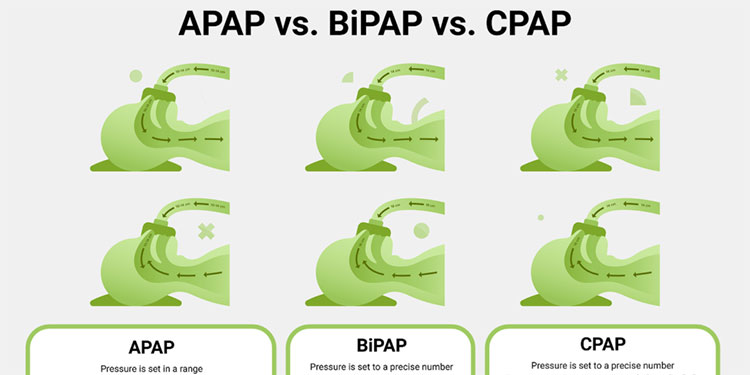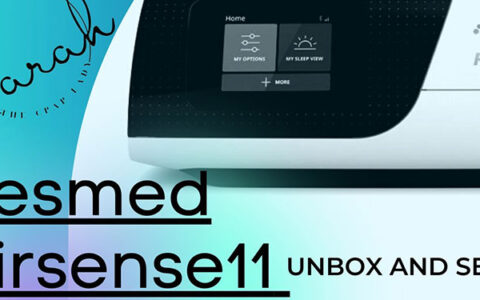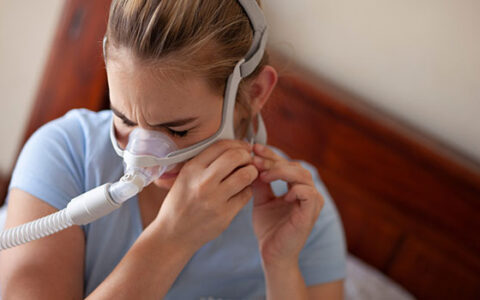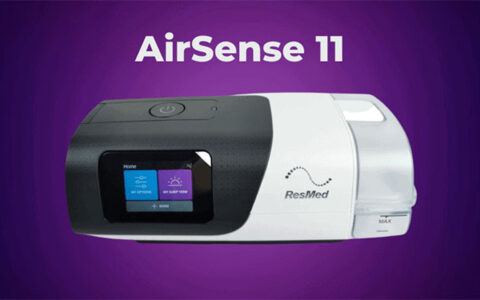What’s the Difference Between a CPAP, APAP, and BiPAP Machine?
Sleep apnea is a condition that affects many people and can have severe consequences if left untreated. It occurs when the muscles of the throat and tongue relax during sleep, blocking the airway and preventing oxygen from reaching the lungs, organs, and tissues. To address this issue, various sleep apnea devices deliver a constant flow
Sleep apnea is a condition that affects many people and can have severe consequences if left untreated. It occurs when the muscles of the throat and tongue relax during sleep, blocking the airway and preventing oxygen from reaching the lungs, organs, and tissues. To address this issue, various sleep apnea devices deliver a constant flow of air to help keep the airway open. This article will discuss the different types of sleep apnea devices and their respective functions.

Hello everyone. My name is Bo. I’m here today from CPAP Common to discuss the differences between various sleep apnea devices. Obstructive sleep apnea is when the muscles of the throat and tongue relax during sleep and block the airway, preventing oxygen from reaching the lungs, organs, and tissues. To address this, these machines deliver a constant flow of air to help keep the airway open.
Pressurized air is delivered through the mouth or nose to help open the airway and allow oxygen to reach the lungs. Treating obstructive sleep apnea can increase energy levels and improve the overall quality of life. One standard device used for this treatment is a CPAP (Continuous Positive Airway Pressure) machine, which delivers a constant set pressure of air.
A CPAP machine is set to blow at a pressure between 4 and 20 and cannot change without manual adjustments. It is the least expensive and least sophisticated of the three models. An APAP (Automatic Positive Airway Pressure) machine is more advanced as it adjusts pressure based on breathing patterns throughout the night. APAP stands for automatic positive airway pressure, meaning it can change the pressure to meet your needs.
An APAP machine automatically selects the appropriate pressure. In contrast, a BiPAP (Bi-Level Positive Airway Pressure) device has two pressure settings, one for inhalation and one for exhalation, with the exhale pressure being lower. BiPAPs are used for specialized conditions such as complex or central sleep apnea, where the brain does not send the signal to breathe. Central sleep apnea can result in not taking necessary breaths during sleep, making it essential to treat for the health of your organs.
A BiPAP machine is designed to treat specific conditions, such as central or complex sleep apnea (where both central and obstructive sleep apnea occur). BiPAPs prompt breathing in primary sleep apnea patients but are also the most expensive of the three devices. These devices are all prescription only and require a unique remedy to obtain. If you need to improve your sleep, you should see a doctor for a proper evaluation and recommendation.
Pressurized air can be delivered through the mouth or nose to treat obstructive sleep apnea, opening up the airway by blowing back excess tissue to allow oxygen to reach the lungs. A Continuous Positive Airway Pressure (CPAP) machine, which delivers a single, set pressure, can improve energy levels, mood, mental function, and overall health. The Automatic Positive Airway Pressure (APAP) machine adjusts pressure based on the user’s breathing patterns. In contrast, the Bi-Level Positive Airway Pressure (BiPAP) device has separate pressure settings for inhalation and exhalation. BiPAP machines treat complex and central sleep apnea and require a prescription. Sleep apnea therapy can significantly improve energy levels, mood, and mental function. It is essential to get a prescription from a doctor to treat sleep apnea.
Conclusion
Treating sleep apnea can profoundly impact a person’s overall quality of life. The different sleep apnea devices – CPAP, APAP, and BiPAP – each have unique features and functions designed to meet the specific needs of individuals with sleep apnea. Although these devices can be expensive, they are all prescription only and require a unique remedy. Suppose you or someone you know is struggling with sleep apnea. In that case, seeking medical advice and getting a proper evaluation is essential to determine the best action.
Sleep apnea can be managed with appropriate treatment. And its adverse effects can be minimized, leading to increased energy levels, improved mood, and better mental function.
Notice: Internet users spontaneously contributed the article content, and the article views only represent the author himself. This site only provides storage services, does not have ownership, and bears relevant legal liabilities. If you find plagiarism, infringement, or illegal content, please contact the administrator to delete it.



